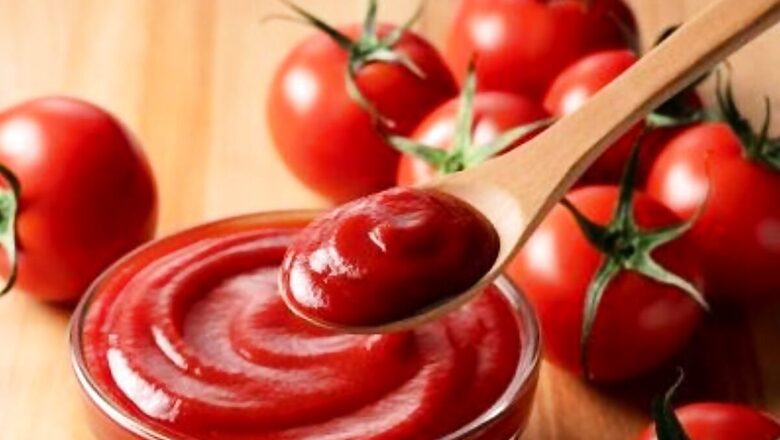
views
In the last week or so, the prices of the most commonly used fruit in Indian cooking that it is actually cited as an essential vegetable went through the ceiling and remained in orbit up there much like the Chandrayaan. I am talking about the tomato. For a week or so, a kilo tomato was more expensive than petrol, and the price so exorbitant that, I heard, even McDonald’s expunged the ingredient from their menus.
Now, how does a middle-class country, whose kitchens in our large northern states depend so much on onion and tomato, live without tomatoes? Especially considering that, from a simple home-cooked meal to bustling street food stalls, tomatoes are a common feature in day-to-day Indian cooking. Often used as a base for tempering and frequently cooked down to form rich gravies or then pureed to create thick and luscious sauces, the tomato is a key component in dal, sabzi, meat, gravies, biryanis, rice dishes, in salads, chaats, even raitas and kachumber. So how can large parts of India live without the holy trinity of garlic, onion and tomato? Can you imagine a Chicken Makhanwala or a Butter Chicken without tomatoes? No, you can’t, neither can I but this column is not just about the tomato. It’s about that other form of tomato, that appears on your plate because of a spontaneous, intuitive, involuntary action.
I am speaking of how, when there is something fried on my plate, my hand casually nay, involuntarily reaches out for a bottle of tomato ketchup and results in the tumbling out of a huge volume of the thick, glossy, red sauce to dip in. You don’t think about it much, and often may even not actually associate it with the tomato. Most of us don’t even give this crimson, tart, zealous condiment a second thought. It’s just taken for granted. But that is also tomato and that is also a huge part of our diet, at least mine.
Not only do I find myself using the original recipe tomato ketchup liberally, depending on what I am dipping into it, I also alternate between Indian flavours like Hot and Sweet Tomato Chilli Sauce, Rich Tomato Sauce, No Onion No Garlic sauce, Tomato-Imli and even Tomato-Green Chilli sauce. Though these Indian flavours are close to our heart and our food, we all know that tomato ketchup is not an Indian creation.
For years, we thought that tomato ketchup is as American as burgers and fries, but it turns out I am slightly wrong. After a bit of delving, it appears like the word ‘ketchup’ came from the Chinese word, “Kê-tsiap”, a sauce made from fermented fish, which was quite popular in South East Asia. In all probability, the Brits, returned home with this sauce and tried to replicate it, using mushrooms, walnuts, oysters, even anchovies to try and simulate the fishy, savory taste. The result? A thin and dark sauce that was often added to soups, gravies, meat and fish.
In 1812, James Mease, a scientist and horticulturalist from Philadelphia in the United States, added tomatoes to the mix and published the first real recipe of tomato ketchup. He used a concoction of tomato pulp, spices, and brandy. But it was a Pittsburgh man named Henry J. Heinz who introduced his famous formulation in 1876. His brew contained tomatoes, distilled vinegar, brown sugar, salt and a variety of spices. This is presumably when tomato ketchup as we know it today was first created.
It is from that day to this, the tomato ketchup or tomato sauce, as we generally call it here, has played such a pivotal role in my life. I have as a child eaten tomato ketchup with nearly everything. With just plain rice, a few dashes of ketchup, a vigorous stir and it tasted fab. On a slice of white bread with butter, no fuss to make, on top of bhajiyas, pakodas, or fried/ boiled or an omlette. On farsaan, sev, papdi. I have even added ketchup into a pan as a base when trying to cook up a quick chicken or stir-fried prawns. You can literally use ketchup on anything, but especially with anything potato.
Whether it is mashed potato, potato chips or French fries, they just seem incomplete without ketchup. Personally, what I like doing is sitting at my huge picture window on a rainy day with a bowl of good old fashioned freshly made “hot-chips” or what we used to call wafers, and another bowl of tomato ketchup, and dip and eat, and dip and eat. It is the best thing in the world.
Kunal Vijayakar is a food writer based in Mumbai. He tweets @kunalvijayakar and can be followed on Instagram @kunalvijayakar. His YouTube channel is called Khaane Mein Kya Hai. The views expressed in this article are those of the author and do not represent the stand of this publication.




















Comments
0 comment